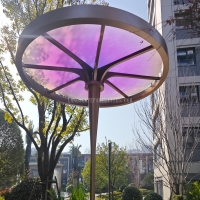Welcome to the website for landscape facilities products and knowledge.
How do landscape tables in outdoor science hubs support experiments?
Landscape tables in outdoor science hubs play a crucial role in supporting experiments by offering durable, adaptable surfaces for hands-on learning. These tables are designed to withstand weather conditions, making them ideal for outdoor educational environments. Their sturdy construction allows students to conduct experiments involving water, soil, or plant samples without worrying about damage. Additionally, the natural setting fosters curiosity and engagement, encouraging learners to explore scientific concepts in real-world contexts.
The versatility of landscape tables enables a wide range of activities, from biology observations to physics demonstrations. Their ergonomic design ensures comfort during prolonged use, while their spacious surfaces accommodate group collaborations. By integrating these tables into outdoor science hubs, educators create immersive learning experiences that bridge classroom theory with practical application.
Moreover, landscape tables often feature built-in storage or attachments for tools, streamlining the experimental process. This functionality reduces setup time, allowing more focus on discovery and analysis. The blend of practicality and environmental connection makes these tables invaluable for fostering a deeper understanding of science in outdoor settings.
Ultimately, landscape tables transform outdoor science hubs into dynamic laboratories where students can test hypotheses, record findings, and develop critical thinking skills—all while enjoying the benefits of learning in nature. Their role in modern science education continues to grow as schools prioritize experiential and environmentally connected learning approaches.
Related search:

Recommendation
Metal frame with gradient color acrylic combined with high-end shading landscape facilities